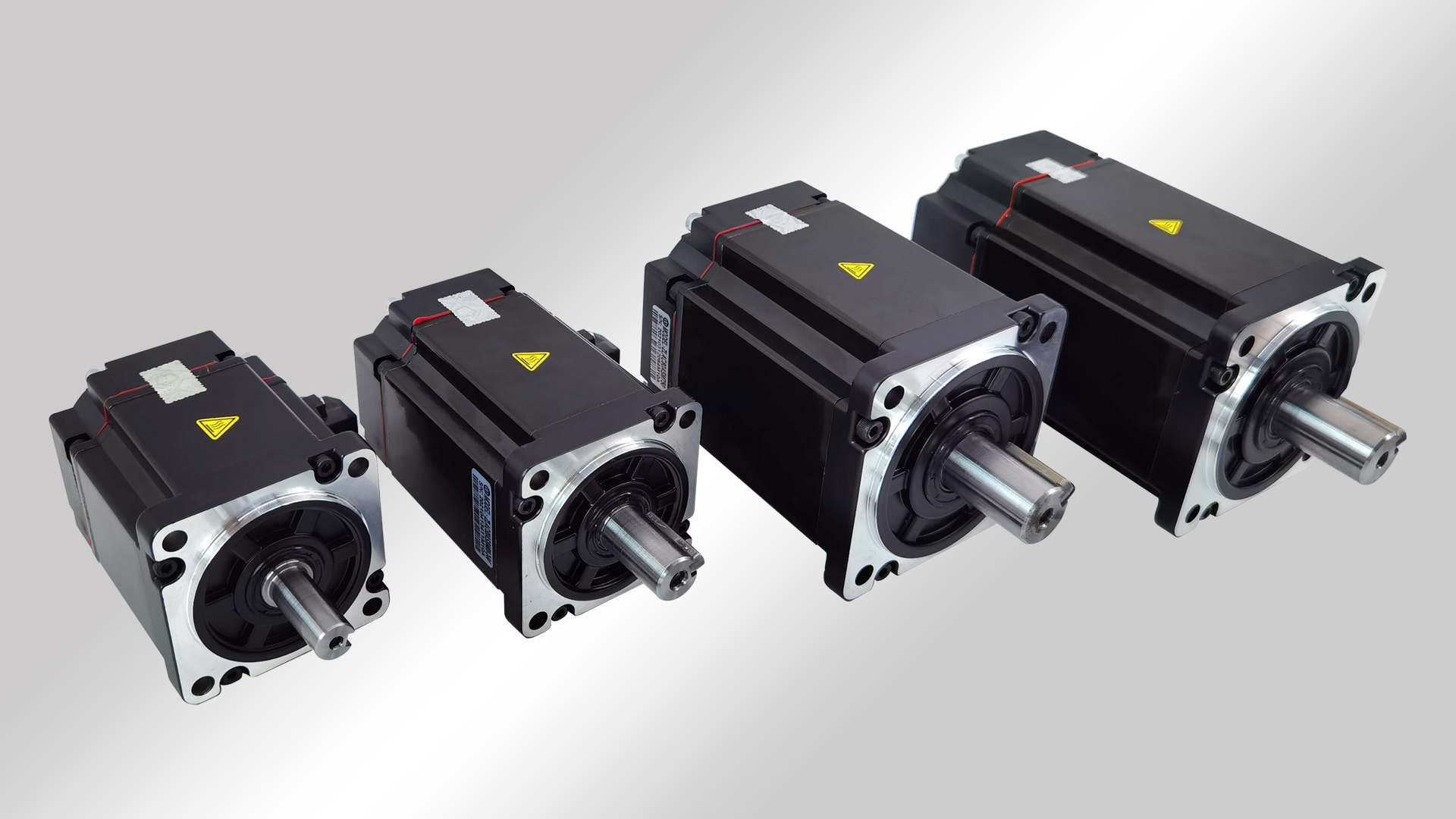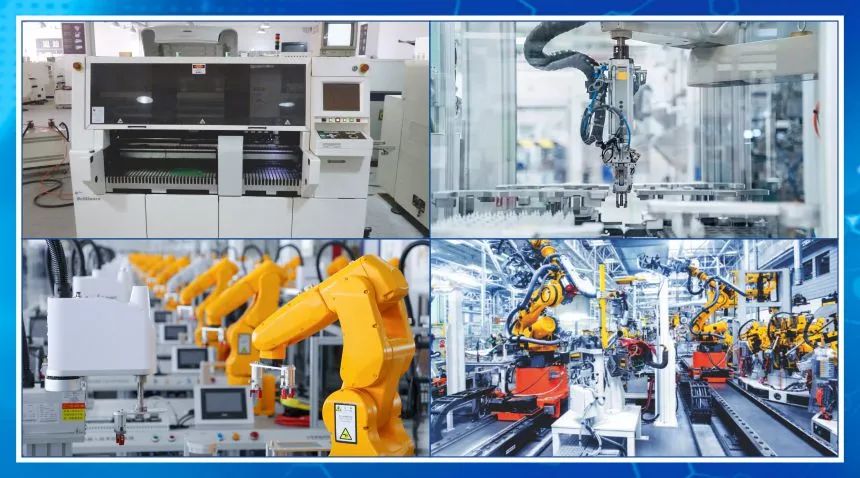伺服电机编码器是安装在伺服电机上用来测量磁极位置和伺服电机转角及转速的一种传感器,从物理介质的不同来分,伺服电机编码器可以分为光电编码器和磁电编码器,另外旋转变压器也算一种特殊的伺服编码器,市场上使用的基本上是光电编码器,不过磁电编码器作为后起之秀,有可靠,价格便宜,抗污染等特点,有赶超光电编码器的趋势。
编码器类型非常多,最常用的是绝对值编码器、增量编码器和旋转变压器,还有一些更高的通讯编码器。对于伺服电机来讲,要想获得非常高的性能和精度,必须提高编码器的分辨率,常用的伺服编码器2000-2500线(脉冲数/转),但线数越高,编码器价格就越贵,所以必须了解控制系统的要求,以选择最合适的编码器。对于增量性编码器,最为常用,但最大的问题是:掉电位置丢失,所以要保持掉电位置,可以采用绝对值编码器;如果机械振动大,则选用光电编码器就不合适了,这是需采用旋转变压器或者磁性编码器。伺服驱动器和编码器是构成伺服系统的两个必要组成部分,伺服驱动器控制部分通过读取编码器获得:转子速度,转子位置和机械位置,可以完成:伺服电机的速度控制、伺服电机的转矩控制、机械位置同步跟踪(多个传动点)、 定点停车。
光学编码器一直都是运动控制应用市场的热门选择。它由LED光源(通常是红外光源)和光电探测器组成,二者分别位于编码器码盘两侧。码盘由塑料或玻璃制成,上面间隔排列着一系列透光和不透光的线或槽。码盘旋转时,LED光路被码盘上间隔排列的线或槽阻断,从而产生两路典型的方波A和B正交脉冲,可用于确定轴的旋转和速度。光编码器靠旋转码盘和光收发器配合工作。它们的距离非常近,但又不能接触。但是在振动下和结构的间隙变大的情况下,码盘会和光收发器碰撞。当光编码器的运动部件互相撞击后,它们的位置就发生了变化从而导致精度降低。光编码器必须在无尘的环境里生产,任何粉尘掉在码盘上,光编码器就失效了。通过严格的密封,通常光编码器要在轴承,外壳和接线处密封。但是密封非常容易受温度影响。由于环境和编码器自身的发热,当温度高时编码器里面的空气和水汽被排出,当温度低时外界的空气和水汽又被吸入。这些水汽凝结在码盘上直接导致光编码器的失效。
磁性编码器的结构与光学编码器类似,但它利用的是磁场,而非光束。磁性编码器使用磁性码盘替代带槽光电码盘,磁性码盘上带有间隔排列的磁极,并在一列霍尔效应传感器或磁阻传感器上旋转。码盘的任何转动都会使这些传感器产生响应,而产生的信号将传输至信号调理前端电路以确定轴的位置。相较于光学编码器,磁性编码器的优势在于更耐用、抗振和抗冲击。而且,在遇到灰尘、污垢和油渍等污染物的情况下,光学编码器的性能会大打折扣,磁性编码器却不受影响,因此非常适合恶劣环境应用。不过,电机(尤其是步进电机)产生的电磁干扰会对磁性编码器造成极大的影响,并且温度变化也会使其产生位置漂移。此外,磁性编码器的分辨率和精度相对较低。另外,磁性编码器响应速度较慢,不能胜任高速运动负载的位置反馈。因此,磁性编码器适用于如下应用场景:定位精度要求不高的点对点往复定位,例如物料搬运,物料分拣,大型设备定位控制,一般机器人定位、速度波动要求不高的连续运转,例如AGV车轮,输送带传输,变频电机反馈、单向高速运行,例如电主轴、负载惯量比较小的运动控制场景、 步进电机和无刷电机的反馈。
深圳中菱科技有限公司,多年来专注于编码器伺服电机的制造与研发,处于行业内领先地位。其产品远销海内外各大机器人公司,已伴随客户的产品遍布全球。在中菱专业且经验丰富的研发团队的开发下,研发生产出的各种增量式和绝对值编码器轮毂伺服电机均被客户所广泛接受。

![]()
Mailbox:sales@zlingkj.com
Office address:303, 3rd Floor, Building B, Fenghuang Zhigu, Tiezi Road, Xixiang Street, Bao'an District, Shenzhen
Factory address:7th Floor, Building 1, XinLiKang LeChuangLi Smart Industry Park, No. 106 Changdong Road, Changping Town, Dongguan City, Guangdong Province, 523570.